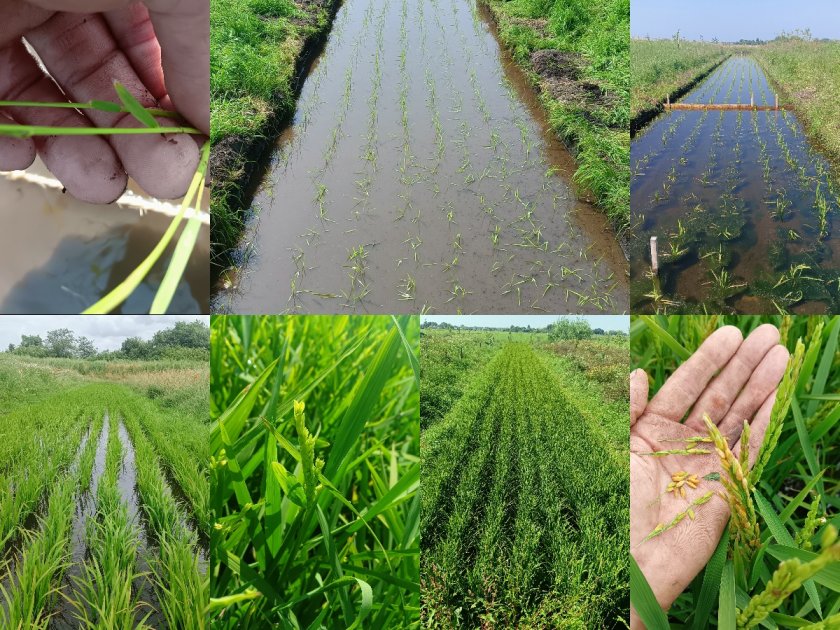
category_news
Educational experiment with polder rice
Is polder rice a feasible circular alternative to cows on peat soil? In May, an experimental trial began, with researchers from Wageningen University & Research (WUR) and Leiden University (LU) planting around 3,000 rice plants at the Polderlab near Leiden. The researchers aimed to test rice as a middle ground for sustainable peatland management in the future: raising the water level but still producing food. Unfortunately, the experiment yielded hardly any rice.
In May, approximately 3,000 rice plants were planted. For this experiment, the researchers obtained a rice variety that had recently been successfully introduced in North Switzerland and should, in theory, be suitable for the Dutch climate. The plants grew well and looked very healthy. However, the cold-spell during flowering caused sterility of the rice flowers, and as a result only roughly 1% of rice grains developed. Tom Schut, researcher at the Plant Production Systems group, adds: “This year has been another example of the rapidly changing climate in Europe, despite the short slightly colder period in August here in the Netherlands. It is clear that we need to mitigate emissions but also adapt to climate change in agriculture with new crops. Dutch “polder” rice may play an important role. ”
New experiment with rice varieties and fish
Having a larger paddy area available next year, the researchers plan to conduct new experiments with more cold-tolerant rice varieties. Researcher Julian Helfenstein: “Though there is hardly any rice harvest this first year, the pilot experiment was still a success. We learned a lot about what to improve and already have many ideas to test next year. We plan to test multiple different rice varieties, as well as measure impacts on greenhouse gas emissions, water fluxes, and biodiversity to determine when and how rice can be part of a more sustainable alternative for current grass-based dairy production on peatland.” Researcher Maarten Schrama from Leiden University adds: “Potentially it qualifies as a strip cropping method at high water levels – preventing both peat decomposition and providing food at the same time.”
Another part of the future experiment will be on fish. Aart van der Linden, researcher at the Animal Production Systems group, explains: “Rice was grown under submerged conditions during the experiment. We see scope, therefore, to cultivate rice and fish simultaneously in the paddies. Next year, we plan to experiment with different fish species in the paddies and get more insight in the potential synergies between rice and fish.”
Rice could be an interesting crop for the Netherlands because it grows well on inundated land. This means that peat mineralisation and land subsidence are halted. Further, problems with sea water intrusion and salinisation can be limited by higher fresh water levels. Rice paddies may further provide important buffer areas for fresh water storage. We also consume a lot of rice that needs to be imported from Southern Europe or Asia. Growing rice locally may provide means to eat more from local sources and hence improve the circularity of our food system. Also, the rice paddies could provide valuable habitat for wetland species such as amphibians and dragonflies. But can rice really grow on peatlands in the Netherlands? Though several innovative farmers in the Netherlands have experimented with rice in recent years, it’s not clear yet if it works.
The experiment was carried out by Sander Roeleveld, Julian Helfenstein, Tom Schut, Aart van der Linden, and Maarten Schrama on Leiden University's Polderlab, a piece of farmland owned by citizen cooperative ‘Land van Ons’. In this lab, Leiden University is researching the agriculture of the future.
